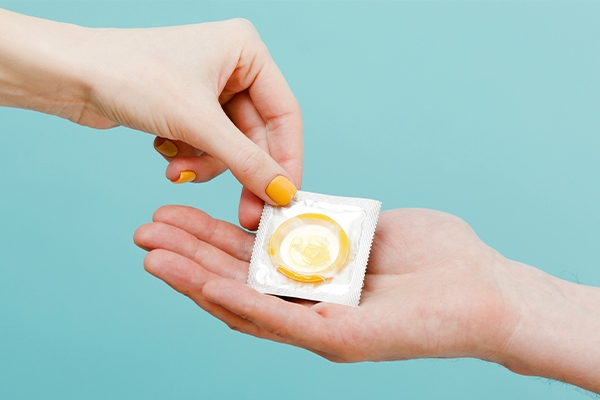Various Male Contraception

When it comes to contraception, women face multiple risks, including hormone imbalance disorders, the chance of irregular menstruation, drastic physical changes, and bleeding. Meanwhile, the risk is essentially nonexistent for men. But why are so few men willing to use contraception?
Every day, men create millions of sperm—about 1,000 every second. Sperm must be prevented from reaching the egg in order to avoid pregnancy. Contraception is one option. Different birth control methods, like female birth control options, have varying effectiveness rates.

According to the BKKBN 2022 Family Information System Data (New SIGA), just about 2.48% of males are willing to contribute to family planning. This is because society assumes that family planning is solely a female concern, despite the fact that family planning for men poses little or no risk.
So far, there are two types of male contraception, namely condoms and vasectomy. Unfortunately, only 2.2% of men for family planning use condoms and 0.25% for vasectomy.
The following are choices of contraceptives for men according to their purpose:
- permanent birth control: vasectomy
- barrier method: condom
- additional protection: spermicide
- monitoring ovulation: fertility awareness
Let's get to know them one by one

1. Vasectomy
A vasectomy is a permanent method of birth control. The sperm ducts will be clipped or tied so they do not reach the testicles. This is done to prevent sperm from entering the seminal fluid. Thus, men are unable to fertilize their spouses when ejaculating.
Vasectomy can be performed as a minimally invasive outpatient surgery or as a major surgical procedure, depending on the patient's needs and health conditions. This procedure is effective since only approximately 15 out of 10,000 couples become pregnant each year.
Vasectomy is usually effective after three months. The success rate is 99%. People who have had this procedure frequently feel pain or bleeding. However, pain in the testicles can persist in rare situations, and infection is possible.
It takes roughly a week to recover from this surgery. During that time, you should avoid sexual activity as well as strenuous exercise such as weightlifting. Don't worry, the vasectomy process will not affect sex drive, erection ability, or orgasm.
2. Condom
Since the Middle Ages, condoms have been used to prevent conception. This is the simplest contraceptive to use and obtain.
Shapes, colors, sizes, textures, and even flavors are available. Some condoms contain a spermicidal lubricant that aids in the killing of sperm. Some condoms contain a lubricant that aids insertion and reduces friction, reducing ripping.
Most condoms are made of latex. If you are allergic to this substance, you can substitute polyurethane or polyisoprene condoms. Condoms can be effective up to 98% of the time if used correctly.
If you don't know how to use it, well, it's fairly simple. Just put on the condom while your penis is erect and use it only during intercourse. Condoms prevent sperm from entering the vaginal canal, preventing the egg from fertilizing.
Condoms not only prevent pregnancy, but they also protect against sexually transmitted infections such as HIV, chlamydia, gonorrhea, and syphilis.
However, if condoms are not properly applied, they can come off or tear. Latex condoms can occasionally cause allergies. Itching and swelling following intercourse are symptoms. Spermicide-coated condoms can help destroy sperm. Unfortunately, it can actually raise the risk of urinary tract infections in partners.
3. Spermicide
Spermicide is a chemical that kills sperm. It is applied by rubbing it into the vagina. This contraceptive is roughly 21% effective. As a result, spermicides are typically used with other kinds of birth control, such as condoms.
4. Testosterone injection
This method entails injecting testosterone. This hormone inhibits the production of pituitary hormones, which signal the testicles to create sperm. Injections are administered either weekly or monthly.
Side effects of these injections include injection site pain, acne, weight gain, abnormal blood lipid levels, and psychological consequences.
5. Fertility awareness
This is commonly referred to as the calendar method. Monitoring the menstrual cycle to determine the most likely timing of ovulation. During this fertile period, the pair abstains from sexual activity.
Fertility awareness has varying degrees of usefulness. It is more likely to be effective if a woman has regular and predictable menstrual cycles. The annual failure rate is roughly 2-23%.
Other ways to reduce pregnancy risk
Other methods exist to lower the chance of an unintended pregnancy. These methods, however, have a higher failure rate.
1. External ejaculation (coitus interruptus)
This procedure involves pulling the penis out of the vagina before ejaculating to prevent sperm from entering the vagina. This procedure is around 96% successful. The coitus interruptus method is hormone-free and cost-free. Its execution will be most effective if the pair makes a joint commitment.
2. Outercourse
Outercourse refers to giving and receiving sexual pleasure in non-pregnant ways, such as oral sex, mutual masturbation, or using vibrators.
There is no likelihood of pregnancy as long as the sperm does not come into touch with the vagina. However, many sexually transmitted illnesses can still be contracted, especially if a person comes into contact with a partner's bodily fluids, such as sperm or vaginal secretions.
That concludes the men's birth control options. There aren't as many as there are for women, but it doesn't stop males from helping to avoid conception. Remember, family planning is not just the responsibility of women.
If you have any questions about the birth control technique that is best for you, please click on WhatsApp or visit the nearest GWS Medika Clinic.



